

Included on this site are the following areas of the villa: page 1: the Pecile and the Heliocaminus Bath page 2: areas of or near the Imperial Palace, including the Building with Doric Pillars page 3: Maritime Theater page 4: Philosophers' Chamber and Greek and Roman Libraries page 5: Piazza d'Oro page 6: Building with Fishpond and Large Baths page 7: Praetorium, Small Baths and Vestibule, Nymphaeum with three Exedra page 8: the Canopus page 9: the Serapeum and the Temple of Venus | ||
The two religious buildings on this page are at opposite sides of the Villa. The Serapeum, immediately below, is at the south end of the Canopus as well as the southwest end of the excavated portion of the Villa while the Temple of Venus is on the northern edge.The SerapeumThe Serapeum is a large nymphaeum in the form of an exedra at the south end of the Canopus which recalls the Temple of Serapis located in the city of Canopus. This temple is partly dug into the hillside. Note the rectangular pool in front of the nymphaeum. "This was a large coenatio, as the presence of a stibadion (semicircular stone bench with an elevated surface), or banquet couch indicates, that, on the basis of its orientation toward the north of the complex and the presence of gardens, pools with small waterfalls and running water obtained by means of a complex pumping system on the dome that allowed a sheet of water to fall in front of the diners, was used during the hot summer months" (Adembri 87-88). | ||
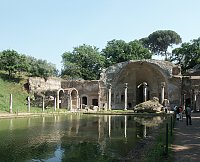
|
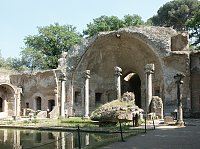
|
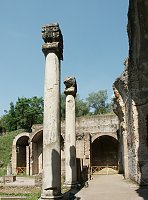
|
| The temple built into the hillside (and partly subterranean) consists of an apse with eight niches flanking an artificial grotto. According to Henri Stierlin, "the Sanctuary of Serapis, at the farthest end of the canopus, is a place of chthonian worship at Hadrian's Villa. A system of concentric canals and rooms that penetrate deep into the hill formed the stage for initiation ceremonies" (169). | ||
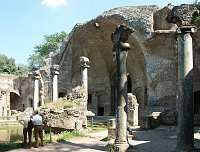
|
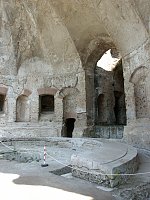 |

|
Temple of Venus with copy of the Aphrodite of Knidos by Praxiteles | ||
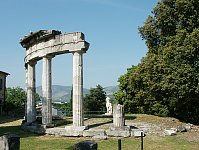
|
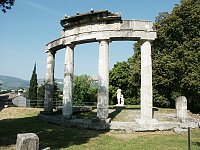
|
"The circular plan of the central structure, the use of the Doric order and the discovery of a replica of the celebrated Aphrodite of Knidos led to the association between the Nymphaeum and the Greek tholos in Knidos, where the original statue by Praxiteles was located" (Adembri 106). |
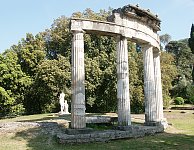
|
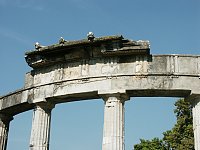
|
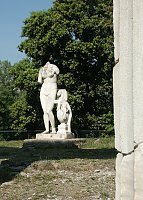
|
 Click here to return to index of art historical sites.
Click here to return to index of art historical sites.
 Click here to return to index of artists and architects.
Click here to return to index of artists and architects.
 Click here to return to chronological index.
Click here to return to chronological index.
 Click here to see the home page of Bluffton University.
Click here to see the home page of Bluffton University.
